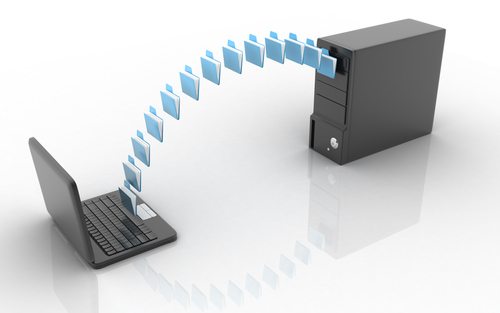For sure, every techie in the land lives by these words by heart: backup data—regardless if it’s active or archived data. It’s considered a sacrilege of sort not to have storage systems in place.
However, this doesn’t mean it’s the end of the line for IT security. Back-up data can still be targeted as criminal hackers can now pose as network administrators to move within your system.
Data Security Threats.
The best way to protect your organization is to identify threats and reduce risks. As sophisticated as they may seem criminal hackers often adopt attack patterns, using the most effective approach. In reality, hacking is a tedious process, so each develop skills and use tools of the trade for better results.
- Passive attacks – where information or data is disclosed to an attacker without the knowledge or consent of the user. Attackers can do this by analyzing traffic in your network, monitoring unprotected communications, and decrypting weak encryptions. They can capture authentication information such as passwords and other personal details.
- Active attacks – attackers exploit information in transit, launch an attack against your network or use an authorized remote server. Any of these may result in dissemination of data files, denial of service, or modification of data.
- Close-in attacks – unauthorized individuals have close physical access to your security network, system, or facility. This kind of threat is possible through open access, surreptitious entry, or both.
- Insider attacks – can be both malicious and non-malicious. Malicious attacks may come from disgruntled employees in “partnership” with vendors, suppliers, contractors, or customers of your organization. Poorly trained or careless employees who disregard security protocols may unconsciously put your system at risk.
- Distribution attacks – malicious modification of any hardware or software that you purchase from its distributor. These attacks make use of a backdoor or malicious code to gain unauthorized entry into your system in the future.
It’s not all grim news, though. A slew of security methods can make your data safe and sound. Here are some steps you can take:
- Manage employee access to customer information or details with a balance between employees’ capabilities to access or authenticate clients’ data and minimize risk to a security breach.
- Educate your employees about phishing scams on social media and other platforms.
- Always patch your servers. Monitor and implement security updates as soon as IT companies release them.
- Invest in anti-virus and other security software to add multiple layers of security to your system.
- Take advantage of remote wiping technologies, which can delete or restrict data from compromised devices when security threats are reported or detected.
- Choose your security service provider based on their reputation and security service offerings.
- Protect your website with security protocols and web server encryption.
- Hire an IT consultant to advise you regarding various security management issues.
Based on ethical and legal perspectives, customer data should be protected at all times. Their data is your organization’s most prized asset, which should be guarded with your life, so to speak. It’s always advisable, therefore, to scout companies offering data recovery services as it is neither too early nor too late to make your organization’s storage security program a priority.
[su_box title=”About Vladimir de Ramos” style=”noise” box_color=”#336588″][short_info id=’60598′ desc=”true” all=”false”][/su_box]
The opinions expressed in this post belongs to the individual contributors and do not necessarily reflect the views of Information Security Buzz.



